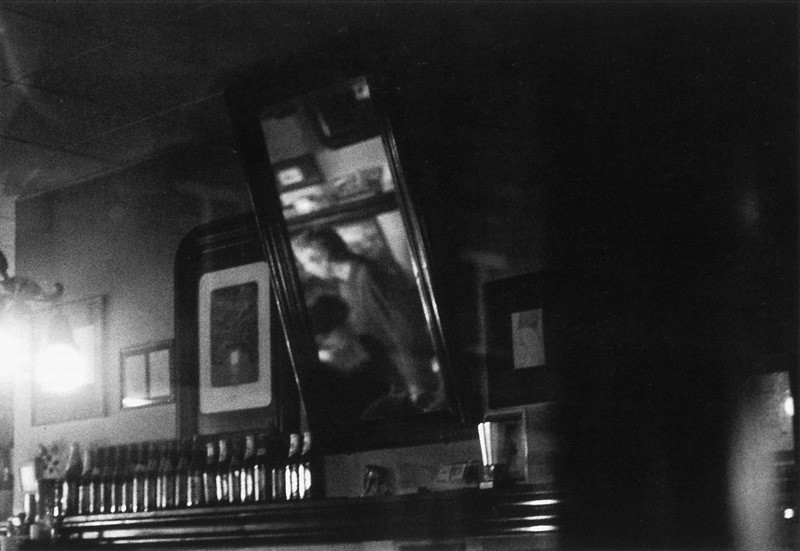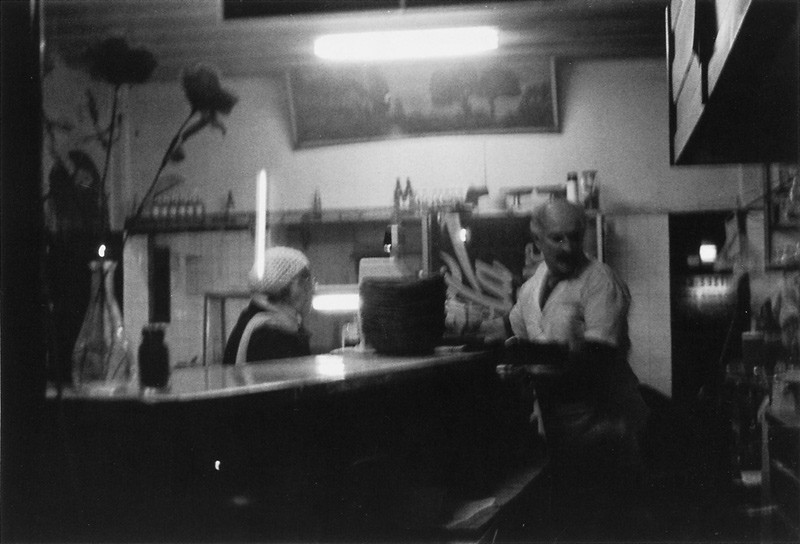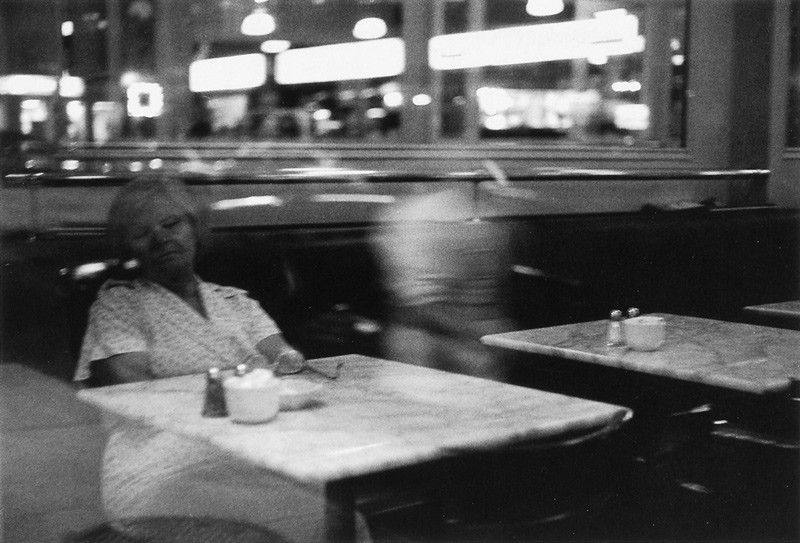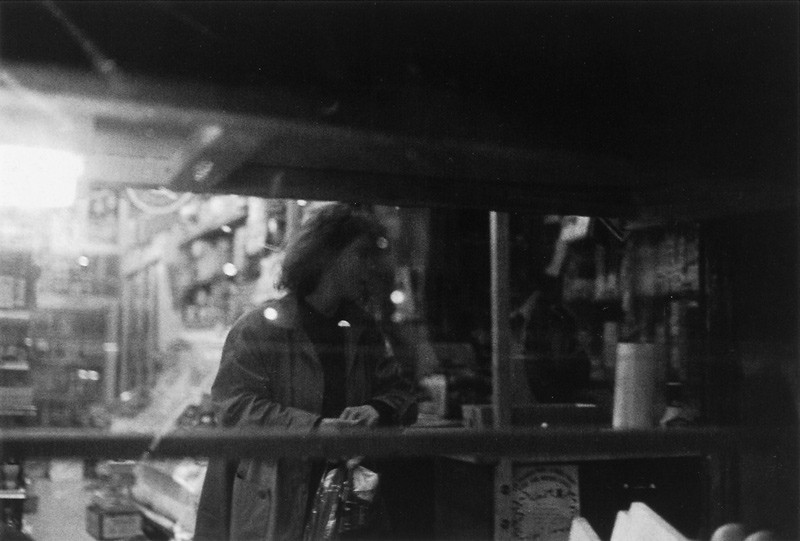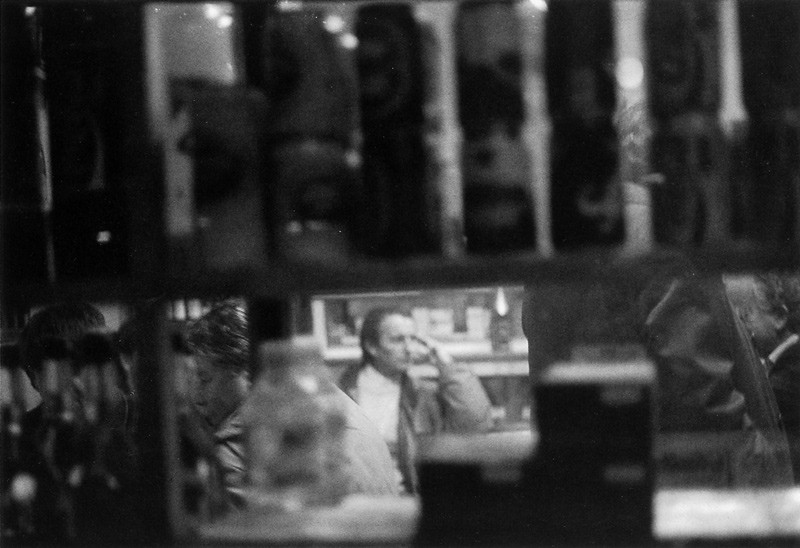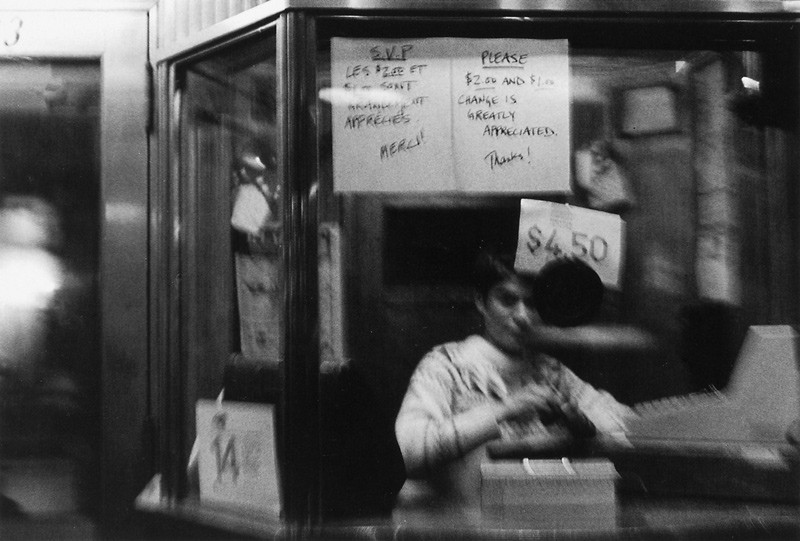[Spring 1995]
by Robert Legendre
I am interested in reinstating in the figurative representation of an object the entire complex system of the impressions it makes upon us in ordinary situations of daily life; that is, the manner in which it shakes our affectivity and the shapes it takes in our memory.
⎯ Jean Dubuffet1
I walk the streets. My eye is drawn to those nocturnal places where people, often solitary, seem to find comfort. L am also alone. And I decide to stay and watch what goes on outside myself. By choosing to photograph people from outside of where they are, I try to suggest their isolation and take into account my own. A pane of glass comes between myself and us, accentuating a state of uncommunicativeness that already exists. A wall both blind and transparent, concealing stories untold. Walls that we erect between and within ourselves.
⎯ Phyllis Katrapani2
This text by photographer >Phyllis Katrapani unequivocally states her intentions. The images reflect the artist’s delicateness and discretion (albeit relative) with respect to the subjects she observes. The “glass-barrier” becomes a screen, essential to her discretion. Avoiding the heaviness of certain technical devices and the use of complex artifice, Phyllis Katrapani masters her medium with nuance and discernment. She leads us into a world of shadows and whispers, where the glare of a luminous source startles both the viewer (as “voyeur”) and the photographed subject. Equally inspired by her intuition and her experience, Katrapani creates scenes reminiscent of George Orwell’s 1984.
Translated by Jennifer Couëlle
2 Figures in Lit Places was produced with the help of the Canada Council’s Exploration Programme.
Phyllis Katrapani studied at l’Université du Québec à Montréal and at the Prague School of Film (FAMU). She has directed two films in which photography plays a key role: Zatisi (Still Life), 1992 and Ithaque, 1995.

